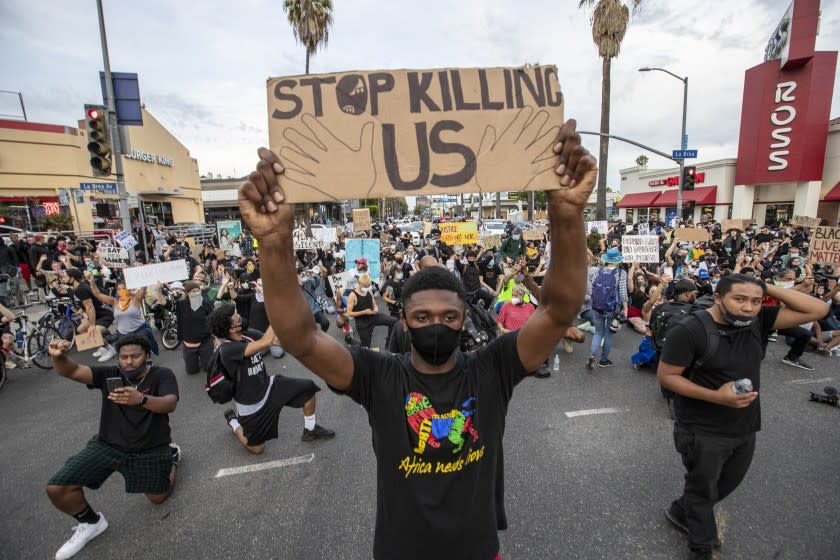Editorial: Seven things Californians can do right now to fight structural racism

Fueled by anger, fear and dread, protesters continue to flood the streets to demand justice not only for the killing of George Floyd, but an end to the deep systemic racism that has allowed police brutality and day-in, day-out discrimination to endure. The protests are being driven by young people — of all ethnic and racial backgrounds — who are demanding a more just nation. We would be a foolish, hard-hearted society if we ignored their call to action.
What, then, can Californians do to address the issues and inequities brought up by the demonstrations? We asked activists, academics and elected leaders to suggest some actions that could be taken immediately by individuals and institutions. These are just a few ideas, and we welcome hearing more from you.
Racism: Admit it, own it
Talk about racism and how to be antiracist
Put your money where your mouth is
Solving these problems will require major structural economic reforms. In the meantime, individuals can make a statement with their dollars by supporting minority-owned businesses, donating to advocacy groups and giving to mutual-aid networks that can provide emergency assistance to help vulnerable community members stay housed, fed and solvent.
Fight racism with education
California's first attempt at creating an ethnic studies course for high schools was scrapped after it produced a blobby mess of impenetrable jargon. Nevertheless, the state still needs an ethnic studies curriculum to help imbue students with an understanding of their own history and that of others. There's no reason to wait until high school or college, either (one proposal in the Legislature would add an ethnic studies requirement to California State University degrees). Lessons about these issues in U.S. history and current events, as well as how to identify the implicit biases we all have, should be embedded into learning, beginning in elementary school.
Stop COVID-19 from ravaging black communities
10% percent of the COVID-19 deaths
This is not an accident, but the inevitable outcome of centuries of unchecked systemic racism that has denied African Americans the same economic opportunities as white Americans and limited their access to heathcare and social safety nets. African Americans also tend to work in "essential" jobs that put them at higher risk for contracting the virus.
This uneven death toll must be addressed now. And it can be. The Advancement Project and other local community groups have developed a model to be deployed in Los Angeles, and the premise is simple: Commit public-health resources to substantially increase testing, public education, culturally appropriate contact tracing, protective supplies, and follow-up care — and vaccines, if and when they become available — in the communities hardest hit by COVID-19 cases. It makes sense to devote a proportionate share of pandemic resources to those battling the disease. This could, and should, show the rest of the state how to address COVID-19 and other racial disparities in health.
Invest in California’s communities of color
One idea for how to do that comes from California Forward, a nonpartisan good-government organization focused on shared prosperity: Harness the some $34 billion already approved by voters for infrastructure projects, but still unspent. Legislators should create a process to identify and green light “shovel-ready” projects in low-income communities of color on an expedited timetable. This would have a multipronged benefit: creating well-paying jobs for those left unemployed by the pandemic, boosting economic activity (and with it, tax revenue) and righting a historical wrong of underinvestment in communities of color.
House more black homeless people
Black people who are homeless should be housed at the same rate. Currently, 32% of the homeless people being housed in hotels and motels during the pandemic under the Project Roomkey program are black. That’s good. But that equity needs to continue as the county moves people from hotels into longer term housing.

